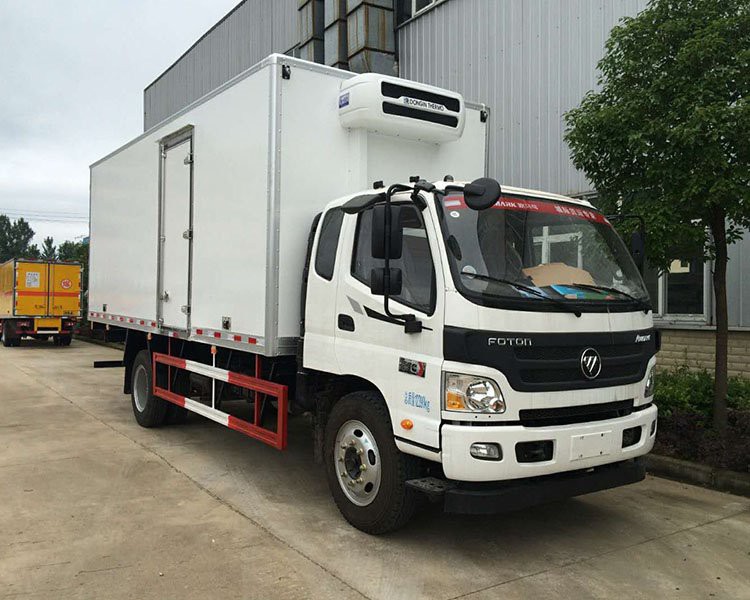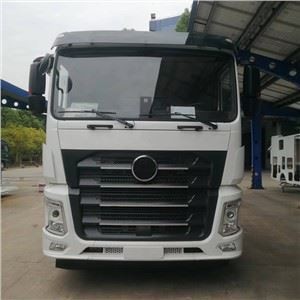Understanding the Capacity of Tanker Trucks: A Comprehensive Guide

Tanker trucks play a crucial role in various industries by transporting liquids ranging from fuel to food-grade materials. The capacity of these trucks significantly impacts logistics, costs, and efficiency. In this article, we will explore the factors that determine the capacity of tanker trucks, different types and sizes available, and how to select the right tanker for specific needs.
What is a Tanker Truck?
A tanker truck, also known as a tank truck or tank vehicle, is designed to transport liquids, gases, or powders. These trucks can vary in size, shape, and material, and they are equipped with specialized features to ensure safe and efficient transport. Common uses include carrying gasoline, chemical products, milk, and other liquids.
Types of Tanker Trucks
Understanding the different types of tanker trucks is essential for assessing their capacities and applications.
Cylindrical Tankers
Cylindrical tankers are perhaps the most recognized type of tanker truck. They feature a round shape that minimizes stress on the tank walls, allowing for higher capacities and safer transport of liquids.
Flatbed Tankers

These trucks feature a flat surface where tanks are mounted. They are often used for transporting bulk liquids in containers and are versatile for various applications.
Insulated Tankers
Insulated tankers are designed to maintain temperature-sensitive contents, making them ideal for transporting products like milk or chemicals that require stable temperatures.
Factors Influencing Tanker Truck Capacity
The capacity of a tanker truck can be influenced by several factors, including legal limitations, design specifications, and operational considerations.
Legal Regulations
Every country has specific regulations governing the maximum capacity of tanker trucks. These laws are designed to ensure safety on the roads. In the U.S., for instance, the Department of Transportation regulates weight limits, which directly affects the capacity of tanker trucks.
Design Specifications
Tankers come in various designs, including single- and multi-compartment tanks. Multi-compartment designs allow for transporting different liquids simultaneously, thus altering the overall capacity.
Vehicle Configurations
Driver and vehicle configurations play a role in capacity. Different configurations can affect how much weight a truck can carry while remaining compliant with road regulations.
Standard Tanker Truck Sizes
Most tanker trucks have capacities ranging between 5,000 to 11,600 gallons. However, this can vary according to the type of liquid being transported and the regions in which the truck is operating.
| Type of Tanker | Typical Capacity (Gallons) | Common Uses |
|---|---|---|
| Standard Tanker | 5,000 – 11,600 | Gasoline, diesel |
| Food Grade Tanker | 5,000 – 8,000 | Milk, juice, wine |
| Chemical Tanker | 5,000 – 10,000 | Chemicals, industrial liquids |
| Specialized Tanker | Variable | Custom applications |
How to Choose the Right Tanker Truck Based on Capacity
Selecting the right tanker truck requires careful consideration of several factors that align with your specific transportation needs. Here are key tips:
1. Assess Your Liquid Type
The type of liquid significantly influences the choice of tanker. For example, food-grade liquids require compliance with different health standards and tank material compared to chemicals.
2. Calculate Volume Needs
Understanding your volume needs will help determine the size of the tanker. If you regularly transport large volumes, a standard or specialized tanker would be ideal.
3. Evaluate Weight Limits
Make sure to consider the state and federal weight limits. Your selected tanker should not only hold the required volume but also comply with weight regulations when fully loaded.
4. Consider Future Needs
Think ahead about your potential expansion needs. Investing in a larger tanker might be more beneficial if you plan to increase transport volume in the future.
Case Studies: Choosing Tanker Trucks for Different Industries
Let’s look at some practical examples in different sectors.

Case Study 1: Fuel Transport
A company involved in gasoline distribution needs a tanker with a capacity of at least 10,000 gallons. They choose a cylindrical double-walled tanker to provide additional safety measures required for transporting flammable liquids. This also allows for compliance with regulations that govern such transportation.
Case Study 2: Milk Transportation
A dairy farm needs to transport large quantities of milk daily. They opt for a food-grade insulated tanker truck with a capacity of 6,000 gallons. This choice ensures that the milk is kept at an appropriate temperature during transit, maintaining quality and safety.
Case Study 3: Chemical Distribution
A chemical manufacturer selects a specialized tanker for a hazardous liquid that can be corrosive. The tanker has a capacity of 5,000 gallons, built from a material resistant to the chemicals it carries, complying with stringent safety regulations.
Safety Features of Tanker Trucks
Safety is a paramount concern when it comes to transporting liquids. Tanker trucks are equipped with various features to ensure safe transport.
1. Multiple Compartment Tanks
These tanks reduce risk by allowing different substances to be carried simultaneously while minimizing contamination risks.
2. Emergency Valves
Emergency shut-off valves help control leaks or spills during accidents, providing an additional layer of safety.
3. Anti-Surge Design
An anti-surge design minimizes the movement of liquids within the tank, thus enhancing vehicle stability, especially when navigating turns.
Maintenance Tips for Tanker Trucks
Regular maintenance of tanker trucks is vital for both safety and efficiency. Here are a few tips:
1. Regular Inspections
Frequent inspections for leaks and structural integrity can prevent significant issues down the road.
2. Cleaning and Sanitization
For food-grade and chemical tankers, regular cleaning and sanitization are crucial to maintain compliance with safety standards.
3. Tire and Brake Checks
Ensure regular checks on tires and brakes, as these are critical for the safe operation of heavy vehicles.
Frequently Asked Questions (FAQs)
What is the average capacity of a tanker truck?
The average capacity of a tanker truck typically ranges between 5,000 to 11,600 gallons, depending on the type and design of the tanker.
Can a tanker truck transport multiple types of liquids?
Yes, multi-compartment tankers can transport different types of liquids simultaneously, as they are designed to minimize the risk of contamination between liquids.
What are the weight restrictions for tanker trucks?
Weight restrictions vary by country and state; in the U.S., the general maximum weight limit for a fully loaded truck can be around 80,000 pounds, including the truck’s weight.
Are there specific regulations for food-grade tankers?
Yes, food-grade tankers must comply with food safety regulations, which can include specific materials for the tank construction and regular inspections.
How do I ensure a tanker truck is safe for operation?
To ensure safety, conduct regular inspections, maintain clean and sanitized tanks, and monitor weight limits. It is also crucial to adhere to all legal and compliance requirements related to the transport of hazardous materials.

What should I consider when choosing a tanker truck?
Consider the type of liquid being transported, the required capacity, weight restrictions, compliance with regulations, and future needs for expansion or versatility in transport.
